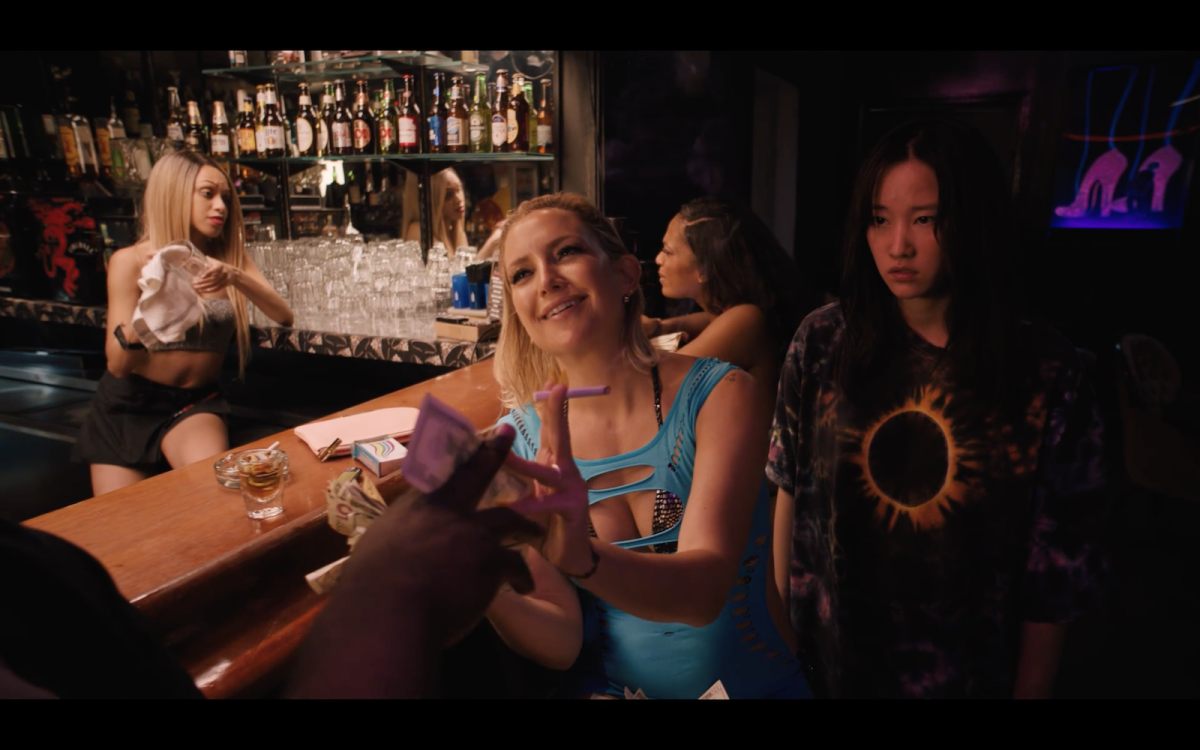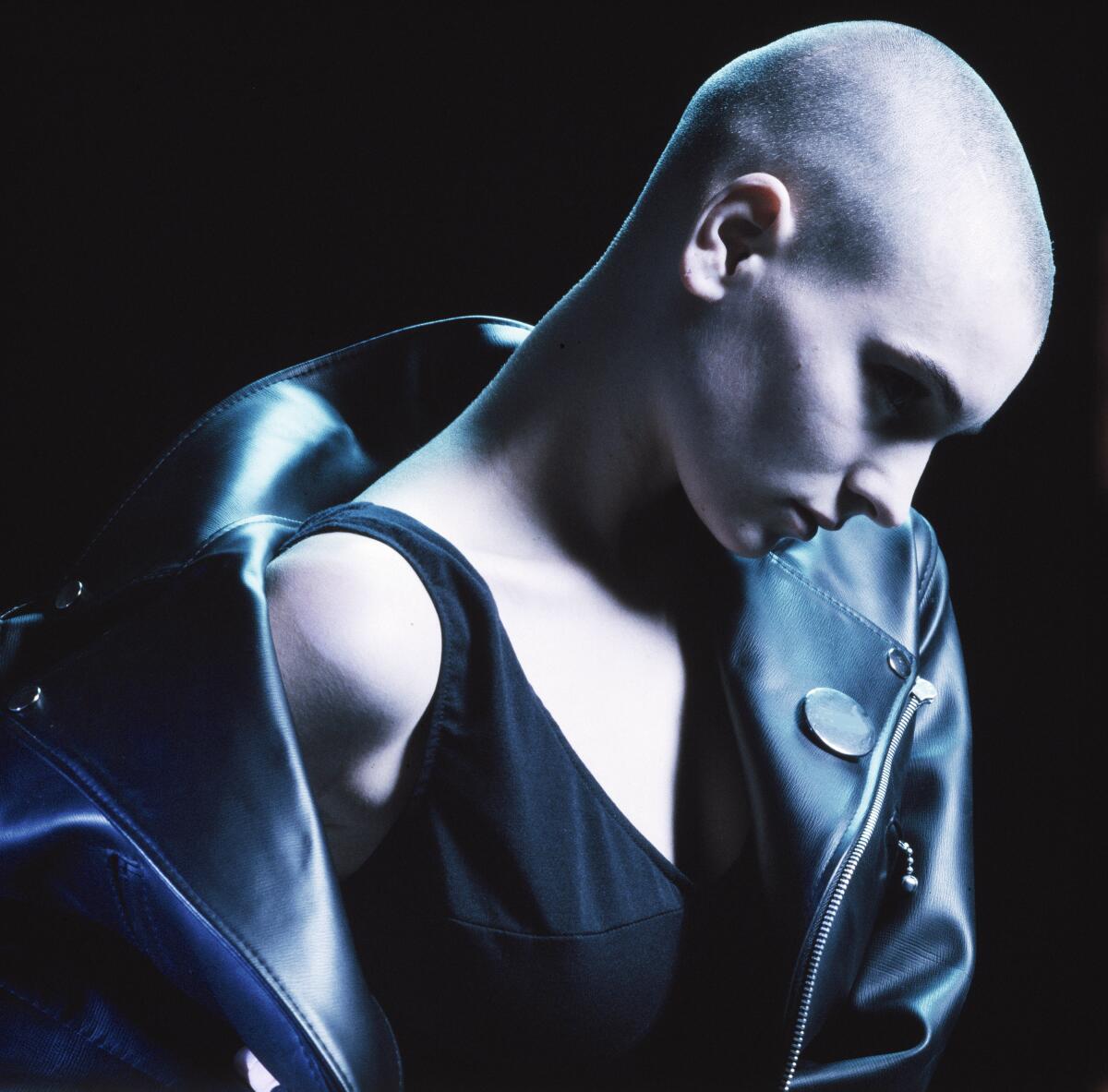Scandal strikes an Irish town in ‘God’s Creatures’

- Share via
‘God’s Creatures’
The stark Irish drama “God’s Creatures” is set in a small fishing village beset by superstition and repetition. It’s the kind of place where people work from sunup to sundown, and then spend the rest of their waking hours in the pub, where they very carefully avoid any topics that could agitate anyone. When native son Brian O’Hara (Paul Mescal) returns after a long absence and is accused by a local woman (Aisling Franciosi) of sexual assault, his mother Aileen (Emily Watson) has to decide whether to be honest about what she knows to serve justice, or make up a story to preserve the social order.
Inspired in part by producer Fodhla Cronin O’Reilly’s own childhood memories (turned into a screenplay by Shane Crowley), “God’s Creatures” suffers some from being about people who are hesitant to share what they’re really thinking and feeling. But co-directors Anna Rose Holmer and Saela Davis (who previously collaborated on the excellent mood-piece “The Fits”) create a strong sense of rhythm and texture, capturing the feel of this town and how it holds its inhabitants tightly. The movie carefully illustrates how some places develop their own ideas of right and wrong, which to outsiders can seem like a localized madness.
‘God’s Creatures.’ R, for language. 1 hour, 40 minutes. Alamo Drafthouse, downtown Los Angeles; Laemmle Royal, West Los Angeles; also available on VOD

‘Mona Lisa and the Blood Moon’
Ana Lily Amirpour’s 2014 debut feature “A Girl Walks Home Alone at Night” is one of the most critically acclaimed vampire movies of recent years. Her follow-up film “The Bad Batch,” as well as her work on TV series like “Legion” and “The Twilight Zone,” have been equally mind-bending and bloody. But it’s still not quite right to call Amirpour a “horror director.” Really, what she does — and splendidly — is build strange and striking environments for captivating characters to wander through. Her films have as much in common with video game levels as they do with classic genre pictures.
In Amirpour’s third film, “Mona Lisa and the Blood Moon,” the heroine moving through a freaky space is a young Korean woman named Mona Lisa (Jeon Jong-seo), who in the opening sequence escapes from a New Orleans mental hospital and hits the streets, where she encounters various authority figures and hustlers — including a stripper named Bonnie (Kate Hudson). Bonnie takes the fugitive home, not out of the goodness of her heart but because she realizes there’s money to be made from this odd girl’s mystical abilities, which can compel other people to do whatever she asks. Mona Lisa’s story is at first bizarre, and then tense, and then genuinely moving as the escapee figures out what she actually wants from the outside world.
As with Amirpour’s earlier films, “Mona Lisa and the Blood Moon” is refreshingly unpredictable, as though the filmmaker herself had no idea what was going to happen when she started writing the screenplay. She starts with a simple idea — what if there were a woman with superpowers and no friends, stranded in New Orleans? — and she proceeds from there, scene to scene, usually looking for the encounter that’ll be the funniest, the scariest or the most poignant. This movie is like existentialist art, discovering its own meaning in the moment with each step its heroine takes.
‘Mona Lisa and the Blood Moon.’ R, for language throughout, sexual material and some violence. 1 hour, 46 minutes. In limited theatrical release; also available on VOD

‘Nothing Compares’
Beginning with the moment when Sinéad O’Connor was booed at Madison Square Garden during a televised Bob Dylan tribute concert, the documentary “Nothing Compares” plunges viewers into the chaos and controversy surrounding a singer who has at times been talked about more than heard. Director Kathryn Ferguson had remarkable access to her subject’s home movie footage and TV appearances, which she pairs with new interviews to tell the story of how O’Connor came roaring out of Ireland at the end of the 1980s, shocking the pop mainstream with her shaved head and her impassioned and thorny — but undeniably catchy — art-rock. When O’Connor used her platform to draw attention to child sexual abuse in the Catholic church, her troubles began.
“Nothing Compares” stays confined to the six-year whirlwind when O’Connor was at her most famous, and steers clear of the decades of scandals that followed. This is clearly a conscious — and astute — choice by Ferguson, who means to show that even at the peak of her commercial powers, O’Connor was questioned, mocked and belittled. The film ends with a long montage of scenes from the past three decades of news reports about the issues the singer tried to called attention to, interspersed with images of modern pop stars who have taken stands without the same repercussions. The world may be more used to Sinéad O’Connor types now. But as one of this film’s commentators chillingly notes, the ‘90s were one of those times when people “did not take kindly to having their program interrupted.”
‘Nothing Compares.’ Not rated. 1 hour, 35 minutes. Available on Showtime
‘Vesper’
A lot of post-apocalyptic dramas are set in a world that looks like our own, only with the buildings reduced to rubble and the people clad in rags. But in “Vesper” — co-directed by Kristina Buozyte and Bruno Samper, and co-written by the same duo with Brian Clark — the end-times have an almost magical shimmer. On a dying planet where almost nothing will grow, society is divided into the rich, who live in enclaves sustained by cutting-edge technology, and the poor, who live off their scraps while trying to coax whatever they can out of the ground. Here, life of any kind — even the bizarre creatures some humans have evolved into — is beautiful in its way.
“Vesper” is on the arty side of science-fiction, more focused on character and setting than in plot-driven thrills. Raffiella Chapman plays the title character: a teenage girl who lives with her sickly father just outside of a farming collective where her cold-hearted Uncle Jonas (Eddie Marsan) treats his young workers like livestock. Vesper sees an opportunity for escape when she meets Camellia (Rosy McEwen), one of the upper-class who has gotten lost outside her citadel. She hopes to win Camellia’s favor by demonstrating her own innovative biotech experiments.
This scenario rarely generates much drama, even with the menacing Jonas skulking about and various life-threatening dangers lurking in the wildness. But there’s something touchingly profound in Vesper’s predicament. Here is a brilliant young mind, stranded in a bleak, unpromising landscape. Yet she keeps appreciating the wonders around her, and keeps planning for a better future. The movie isn’t exactly a rosy portrait of the world to come; but it has a warm, bright spark of hope.
‘Vesper.’ Not rated. 1 hour, 53 minutes. Alamo Drafthouse, downtown Los Angeles; Laemmle Glendale; also available on VOD
‘My Best Friend’s Exorcism’
The wildly inconsistent tones in the horror-comedy “My Best Friend’s Exorcism” keep threatening to derail the movie, though the cast and the story ultimately save the picture. Based on a Grady Hendrix novel, the film stars Elsie Fisher as Abby, a socially awkward scholarship kid who has a tenuous friendship with her wealthier and more popular peers at a private Catholic school. Abby feels a painful loss when her best friend Gretchen (Amiah Miller) has a scary encounter in the woods and returns with an entirely new personality. At first Gretchen’s just sullen, but then she turns mean, exploiting and exposing Abby’s weaknesses to the whole school.
“My Best Friend’s Exorcism” is set in the 1980s in an upscale, conservative suburb; and director Damon Thomas and screenwriter Jenna Lamia overdo it with the smirking satire of Reagan-era Christian culture. The movie also becomes overly conventional as it moves closer to answering the question of whether Gretchen has become demonically possessed or is just a teen going through some changes. But Fisher is consistently outstanding, playing someone determined to rescue a friend, no matter how much it may hurt them both. At its best and its sharpest, this film is less about supernatural monsters than about the common fear of drifting apart from the people you love.
‘My Best Friend’s Exorcism.’ R, for teen drug use, language, sexual references and some violence. 1 hour, 36 minutes. Available on Prime Video
Also on streaming
“Blonde” has already been dividing critics, some of whom have called writer-director Andrew Dominik’s adaptation of Joyce Carol Oates’ novel a visually dynamic and boldly unsparing takedown of Hollywood image-making, while others have said the movie has a shallow and cruel take on its subject, Marilyn Monroe (played by Ana de Armas). One advantage to the streaming era? Netflix subscribers can see the movie now and make up their own minds. Available on Netflix
Available now on DVD and Blu-ray
“Martin Scorsese’s World Cinema Project No. 4” continues an essential series, presenting the best possible versions of great films, drawn from across the decades and around the globe, as part of a mission to broaden the narrative about the history of the artform. The new slate ranges from an early André de Toth melodrama (made in his native Hungary in 1939) to movies from Angola, Argentina, Cameroon, India and Iran. Criterion
More to Read
Only good movies
Get the Indie Focus newsletter, Mark Olsen's weekly guide to the world of cinema.
You may occasionally receive promotional content from the Los Angeles Times.










